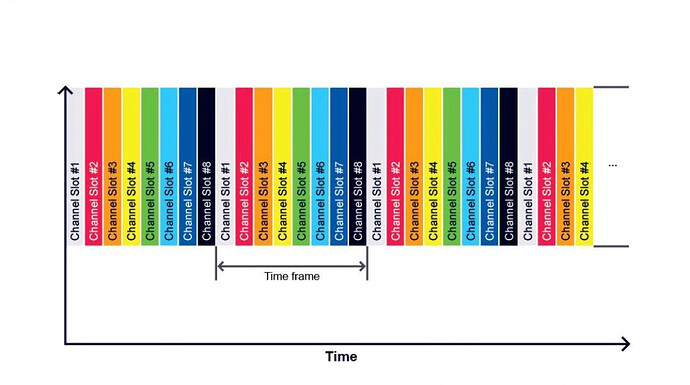-
FDM
It’s frequency division multiplexing.
Simply we divide the whole Avilable bandwidth in to channels , each channel has fixed bandwidth.
Every user need to access the network will be assigned a channel.
-
TDM
It’s time division multiplexing.
Here we work on time axis.
We will distribute the bandwidth among users in Time.
We will assign the bandwidth to different users for specific Times called time slots.
The same bandwidth will be shared among users and to avoid Interference we have to synchronize the network in Time.
This technology used in GSM and also in SDH Transmission.
-
WDM
It’s wavelengths division multiplexing.
Here we divide the optical fiber cable virtually in to multiple lines , that’s can be done by allowing the fiber cable to Carry multiple channels ( data streams ) modulated on different wavelengths.
It’s used in ultra king distance and high capacity fiber systems.
-
CDM
It’s code division multiplexing.
Used in 3G technology.
Here we distinguish between different users by codes.
Codes should be orthogonal to guarantee no Interference.
Different users can share the same bandwidth at the same time but should First modulate the data over orthogonal specific code to avoid interference.
LinkedIn: ![]()
